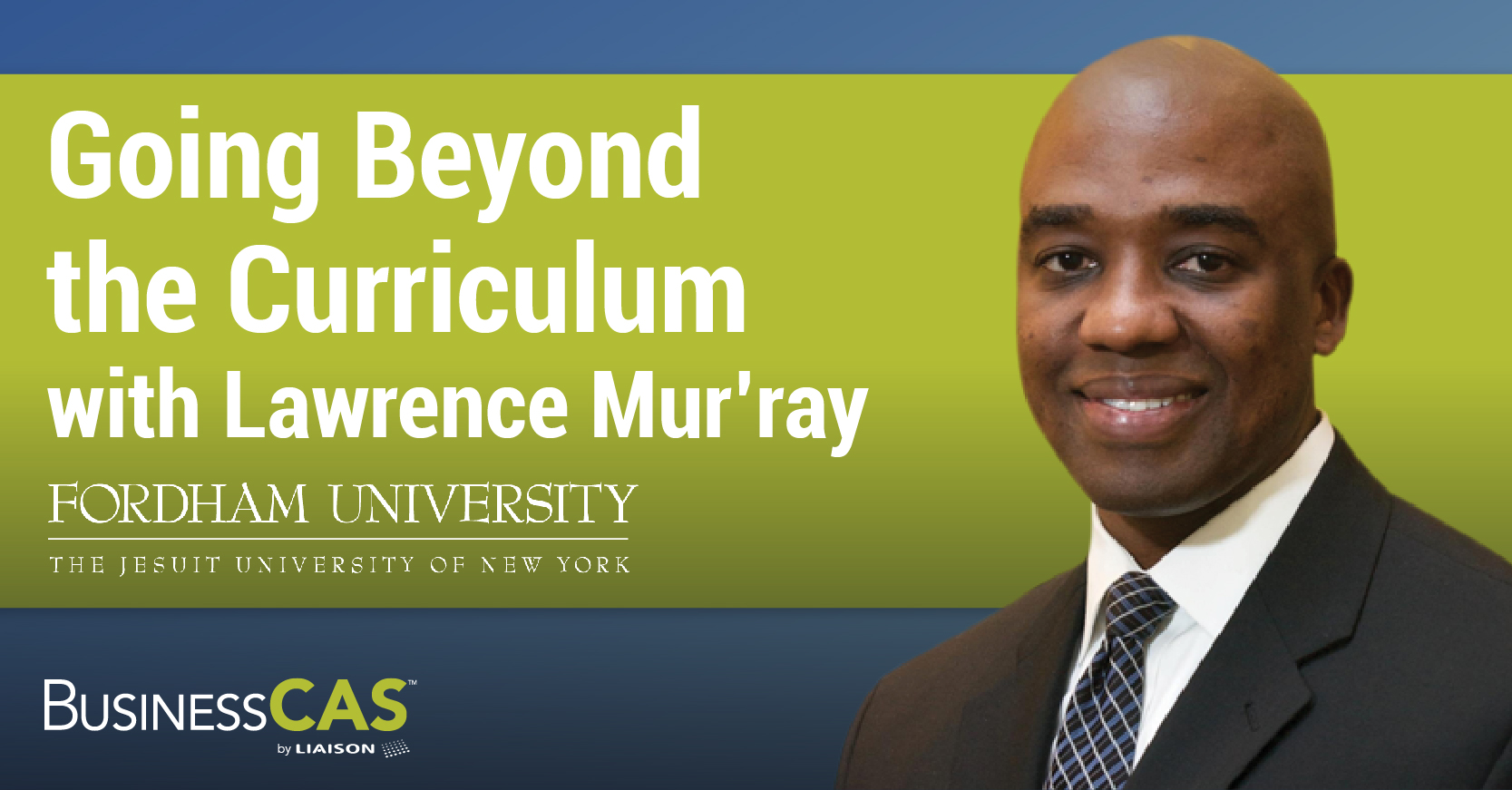by Stephen Taylor, Research Director, BusinessCAS
Stephen Taylor writes about the ever-evolving GME landscape and provides insights for business programs looking for innovative strategies and practices as they recruit, enroll and educate the next generation of MBAs.
Leading in Graduate Management Education (GME) requires the ability to be comfortable being uncomfortable, or at least that’s the common saying in the field. Part mantra, part aphorism, this notion of “being comfortable with discomfort” is one of the defining characteristics of our leadership roles, but there’s more nuance to it, says Lawrence Mur’ray of Fordham University. A better metaphor, according to Mur’ray, is “leading in GME requires you to know when to be the bull in the china shop, and when to be the ballerina…”
That drive to find balance through the right mix of bold action and reflective analysis is the binding thread in the tapestry of achievement and leadership Mur’ray has woven during his professional career. Mur’ray is currently serving as the Senior Assistant Dean of Graduate Admissions and Advising for the Gabelli School of Business at Fordham University, but you may know him from his impact at schools like the Eller College of Business at the University of Arizona, the Kelley School of Business at Indiana University or at UNC Kenan-Flagler, where he led the development of one of the first undergraduate specialization tracks. But despite this history of success, the past is certainly not Mur’ray’s primary focus, and he emphasizes that “leaders have to break the traditional hierarchies of the past in order to take their organizations into the future.”
Mur’ray feels that the current and future value of GME is extremely high, particularly in light of the disruptions caused by the pandemic and political unrest. Mur’ray sees the pandemic as a fulcrum for the way we think about change, and he notes that there have been years of discussion around developing offerings in business education that operate in different modalities. Now is the time, he urges, to embrace new offerings that are dynamic enough to meet the needs of a rapidly changing workplace. Degree programs won’t disappear in Mur’ray’s vision for GME, but they will be supplemented with offerings that meet students where they are. So what else does Mur’ray see coming for GME?
GME & Technology
The variety and sophistication of offerings in EdTech have ballooned in recent years, complicating leaders’ abilities to source effective solutions without doing extensive research on each option. This complexity will be one of the biggest barriers in GME if leaders can’t figure out how to work around it. Mur’ray suggests that “GME needs to determine how to leverage all the tech that’s out there right now, and more importantly, how to standardize its use so colleges and universities have a clear path on how to succeed with tech partners.”
GME & Operations
Business school operations have become remarkably complex, with goals that sometimes stand in direct tension with each other, and with field-level best practices being tied up mostly in anecdote and conference conversations. GME can learn a lot about how to address these challenges, however, by looking to the very training that we offer our students. “Looking to areas like portfolio management, process analysis, and traditional consulting inquiries could really help universities actively build better processes and quickly develop their own best practices,” Mur’ray explains.
GME & Innovation
While many in the field approach conversations about innovation in GME with some hesitation because of the way “innovation” as a term has become a vaguely defined buzz word, Mur’ray’s approach is more measured. “Where are there new programs and practices that should become the standard across the field? Where are the innovations taking place that can help us infuse more business principles across industries? How can we think about what our students need in five years as a way to develop activities for today?” These are just some of the questions Mur’ray uses to lead conversations about why innovation is so important to the future of GME.
Mur’ray sees the future of GME as exceptionally bright, but notes the importance of acknowledging the disruptive period we’re in. “COVID will be a fork in the road for business schools; we’ve had years of conversations about the need to innovate in our offerings, but those who do not use this moment to embrace change and find ways to innovate will be left behind,” asserts Mur’ray.
For Mur’ray, leadership is the key to the success of GME in the future. As an autodidact and avid mentor, he sees GME leaders as having a broader charge than enrolling and graduating students: “The function of a school of business is to create transformational experiences for students that go beyond the curriculum.” And as leaders across the full spectrum of GME functions grapple with the complexity of creating leaders who can solve the complex challenges of now and the future, facilitating transformation beyond the curricula of our programs is an aspiration to be shared by all.

